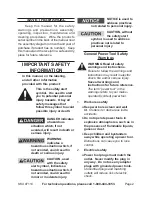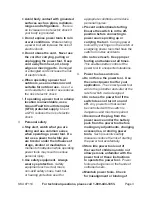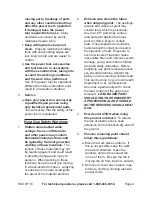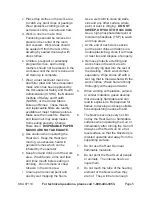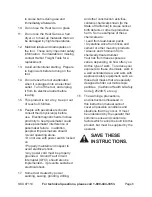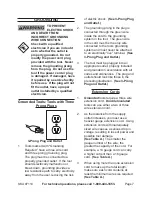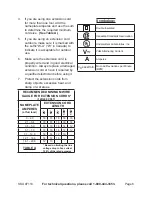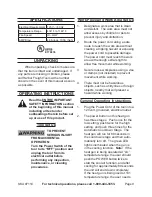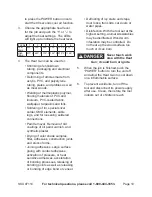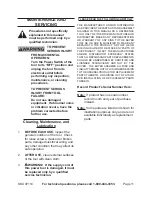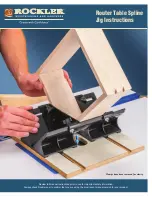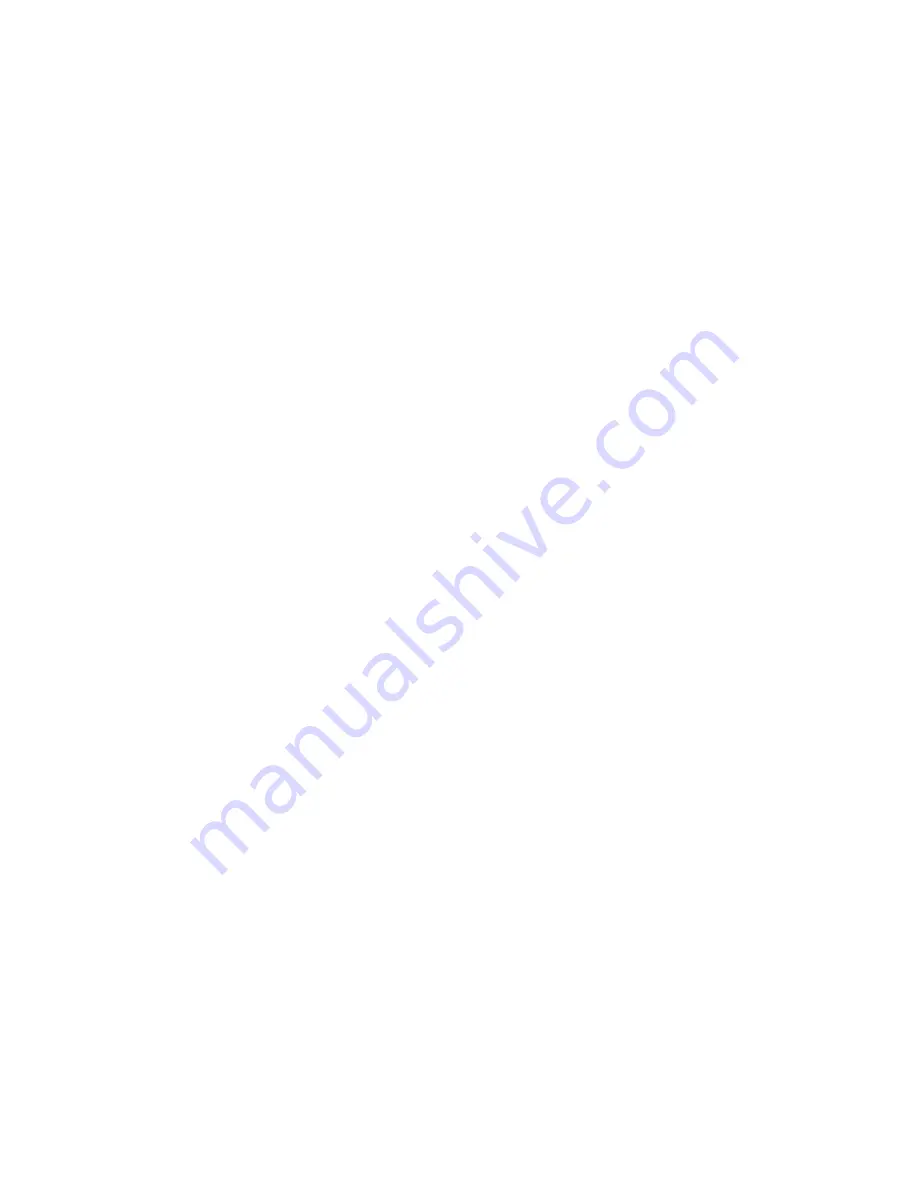
Page 5
SKU 97114
For technical questions, please call 1-800-444-3353.
Place drop clothes in the work area
c.
to catch any paint chips or peelings.
Wear protective clothing such as
extra work shirts, overalls and hats.
Work in one room at a time.
d.
Furnishings should be removed or
placed in the center of the room
and covered. Work areas should
be sealed off from the rest of the
dwelling by sealed doorways with
drop clothes.
Children, pregnant or potentially
e.
pregnant women, and nursing
mothers should not be present in the
work area until the work is done and
all clean up is complete.
Wear a dust respirator mask or a
f.
dual filter (dust and fume) respirator
mask which has been approved by
the Occupational Safety and Health
Administration (OSHA), the National
Institute of Safety and Health
(NIOSH), or the United States
Bureau of Mines. These masks
and replaceable filters are readily
available at major hardware stores.
Make sure the mask fits. Beards
and facial hair may keep masks
from sealing properly. Change
filters often.
diSpOSaBle paper
MaSKS are nOt adeQuate.
Use caution when operating the
g.
Heat Gun. Keep the Heat Gun
moving, as excessive heat will
generate fumes which can be
inhaled by the operator.
Keep food and drink out of the work
h.
area. Wash hands, arms and face
and rinse mouth before eating or
drinking. Do not smoke or chew
tobacco in the work area.
Clean up all removed paint and
i.
dust by wet mopping the floors.
Use a wet cloth to clean all walls,
sills and any other surface where
paint or dust is clinging.
dO nOt
SWeep, drY duSt Or VacuuM.
Use a high phosphate detergent or
trisodium phosphate (TSP) to wash
and mop areas.
At the end of each work session
j.
put the paint chips and debris in a
double plastic bag, close it with tape
or twist ties and dispose of properly.
Remove protective clothing and
k.
work shoes in the work area to
avoid carrying dust into the rest of
the dwelling. Wash work clothes
separately. Wipe shoes off with a
wet rag that is then washed with the
work clothes. Wash hair and body
thoroughly with soap and water.
When working with plastics, varnish,
5.
or similar materials, gases develop
that are easily flammable and can
lead to explosions. Be prepared for
flames to develop and keep suitable
fire extinguishing means at hand.
The Nozzle becomes very hot. Do
6.
not lay the Heat Gun on flammable
surfaces when operating the Gun or
immediately after turning the Gun off.
Always set the Heat Gun on a flat,
level surface so that the Nozzle tip is
directed upwards and away from the
supporting surface.
Do not use the Heat Gun near
7.
flammable materials.
Do not point the Heat Gun at people
8.
or animals. The intense heat can
injure them.
Do not touch the tube of the heating
9.
element or the Nozzle when they
are hot. They will be hot enough


